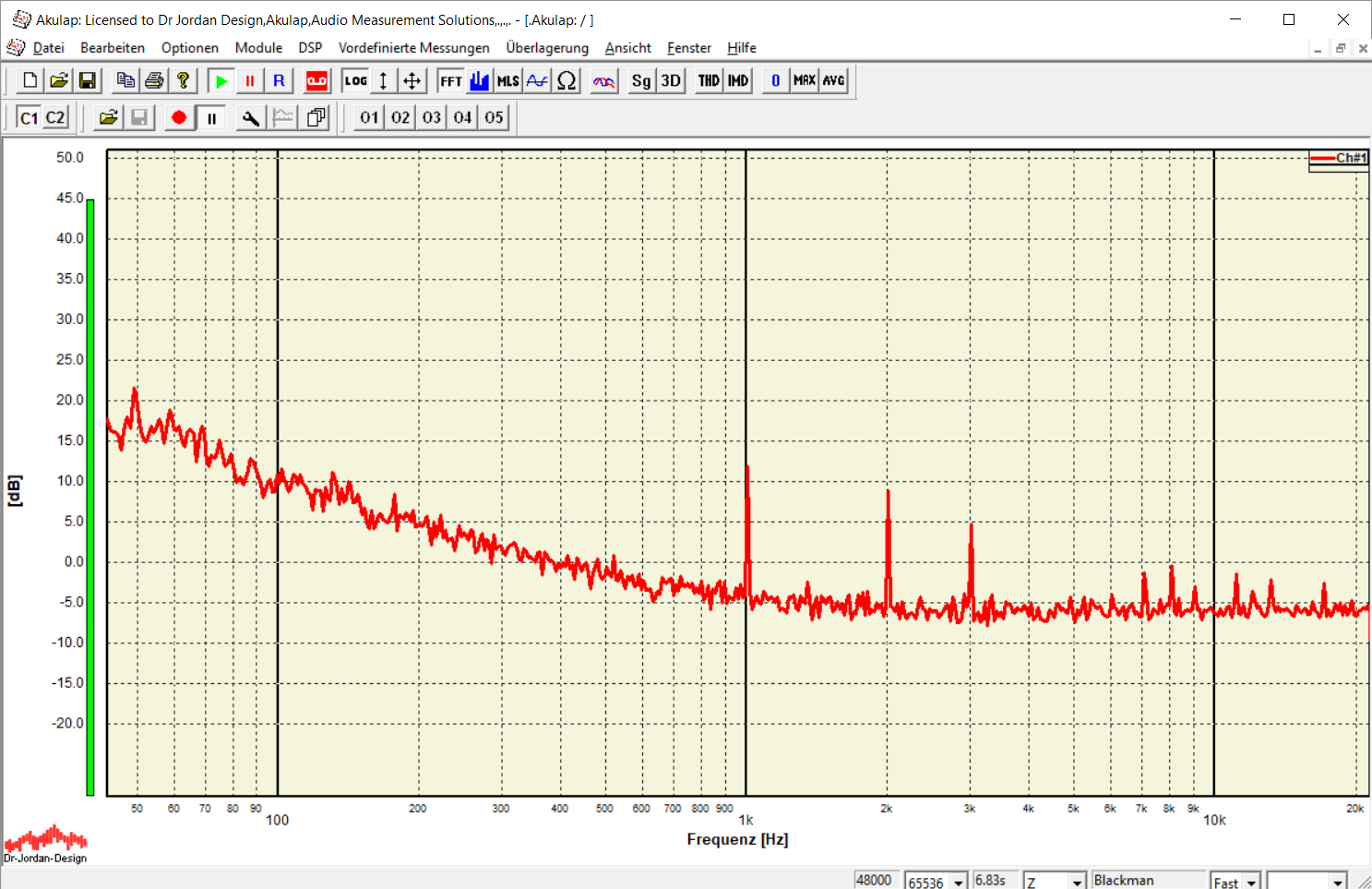Surely you have already noticed that many USB microphones make very annoying chirping noises, which are also reminiscent of chirping or whirring. Of course, these chirping noises are particularly noticeable during quiet passages. The root cause is similar to the classic mains hum that occurs with many audio devices. The humming sound is caused by interference from the mains voltage. However, the hum is at the limit of our hearing ability and is therefore not that annoying. The chirping noises from USB microphones or USB sound cards are in the area of the highest sensitivity of our hearing (1-2kHz). Therfore it is significant noticable.
But how does this noise come about?
Within the USB interface, a data package with digital audio data is transmitted every 1/1000 second, i.e. every millisecond. The rest of the time there are essentially no transfers on the USB interface. Each data packet emits an electromagnetic pulse. This generates exactly the fundamental frequency of 1kHz. USB itself uses a relatively high voltage of 5 volts to have high noise immunity. As a result, the USB data packets have a high level of electromagnetic energy and scatter practically everywhere. Due to the higher frequency, this interference also has a significantly greater range and is much more difficult to suppress than a classic hum.
How can you recognize this noise?
Attention, we have greatly amplified the recording to show the effect clearly. If necessary, reduce the volume.
The simplest measurement is listening . The noises are very typical and cannot be ignored.
With the help of measuring devices, these disturbances can be clearly identified and also quantified. The method of choice is a high-resolution FFT with a longer averaging time.

The interference is usually synchronous with the sampling rate and is therefore exactly 1kHz. You can easily measure the main signal at 1kHz and its harmonics,
In which devices can you find such chirping noises?
This noise occurs mainly in cheaper microphones. The manufacturer uses a single-chip solution to reduce cost. Single-chip means the USB transceiver and the ADCs are in one chip and very close together. This easily leads to crosstalk between the USB digital part and the analog part. However, the chirping noises can also be found in devices with separate ADCs. Typically, the developers did not have sufficient experiance with proper grounding and shielding. The problem cannot be solved by simply modifying the circuit, but the circuit must be designed for clean supply voltages and low interference from the outset. Ultimately, ground loops are the real problem here, too, they act like an antenna. In addition, the 5V supply of the USB interface is modulated in a 1kHz grid. And the analog part is also ultimately supplied from this "dirty" voltage. In principle, the problem can be got under control with a clean design and it can also be measured very easily. If the chirping is already in the recording, the background noise can hardly be removed because, in contrast to the hum, it is in the middle of the audible range.
Do these background noises influence the measurement results?
Usually, NO. These signal components are so small that the measurements are not falsified. Our ears are the only ones that are extremely sensitive to these frequencies, and audio recordings can be irritating at first.


